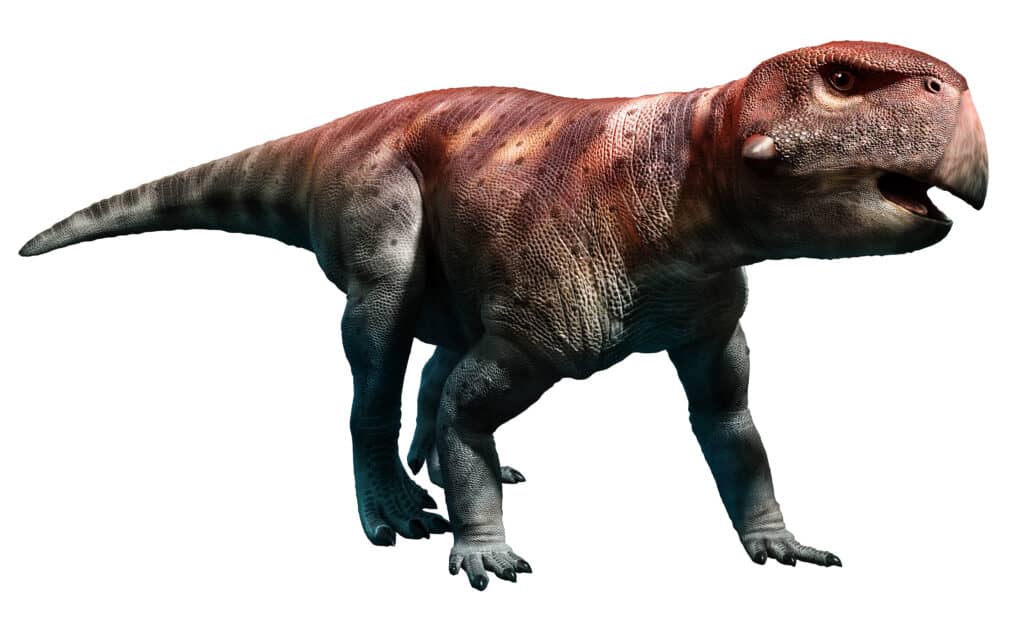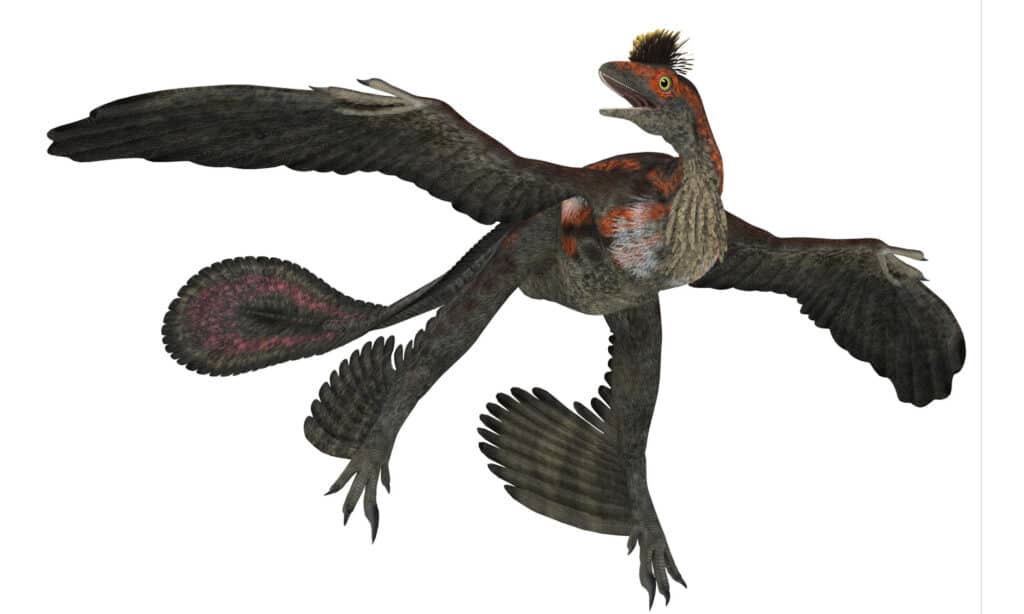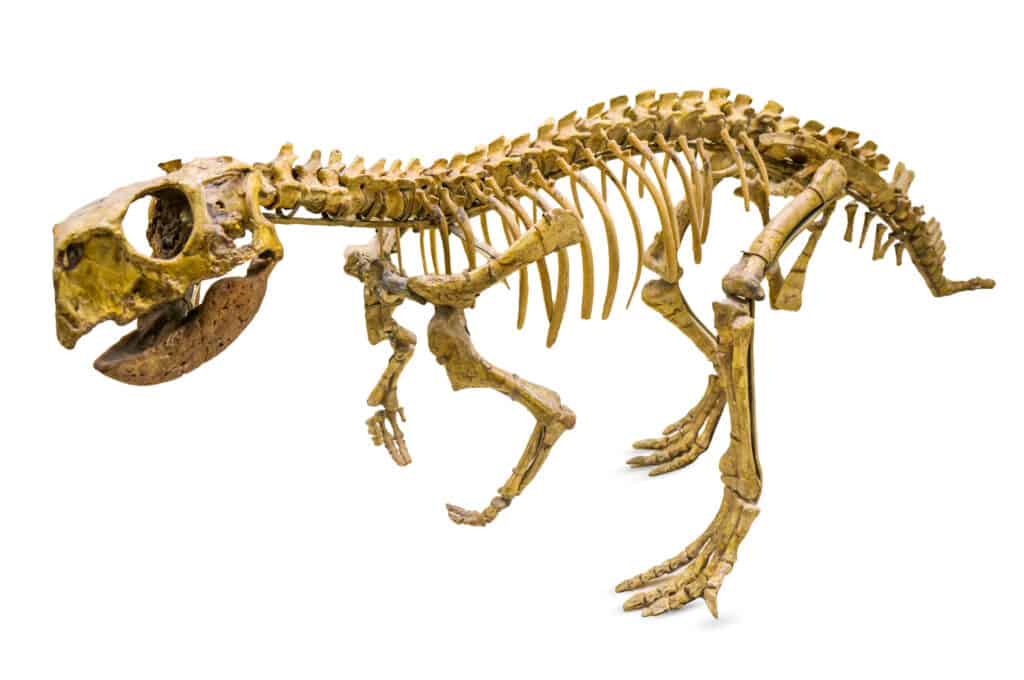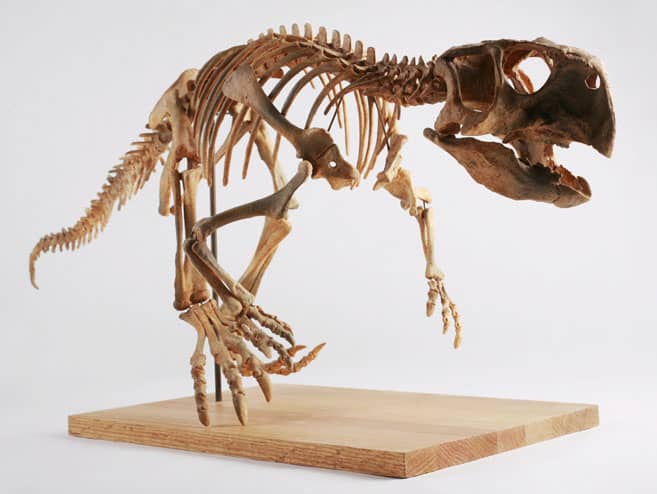It is tempting to think of all dinosaurs as towering carnivores. Yet, many small dinosaurs existed throughout the time the large reptiles lived. One of the genera of dinosaurs with the most species was only about two feet tall, and it was called the parrot lizard. Discover where these creatures lived, how large they grew, and when scientists discovered their fossils!
What Was the Parrot Lizard and How Did It Get That Name?

was named for its unique beak.
©iStock.com/Warpaintcobra
The genus name Psittacosaurus translates to “parrot lizard.” This interesting reptile was given this name due to its parrot-like beak. Despite the confusing name, this creature was a dinosaur. However, it was not an avian dinosaur.
This creature was an early member of the Ceratopsia suborder, but it existed long before the Triceratops. The parrot lizard was a bipedal creature that stood on two feet as an adult. Psittacosaurus mongoliensis, the type species of the genus, measured 2 feet tall, about 6.5 feet long, and weighed a little over 40 pounds.
This small dinosaur was an herbivore, and its beak probably helped it clip plant matter for food. Scientists believe that the dinosaur also consumed gastroliths, or small rocks, that they would use to help break down food for digestion.
Scientists have discovered several well-preserved fossils of Psittacosaurus, including over a dozen complete skeletons that include the reptile’s skull. Fossils with this level of completeness are rare in the world of paleontology. As a result, scientists have learned a great deal about the dinosaurs in this genus.
Psittacosaurus Was a Camouflaged Dinosaur
An interesting facet of this dinosaur is that it exhibited camouflage. Reconstructions of dinosaurs in this genus demonstrate that it had defensive colorations that included a dark dorsal area and a light ventral area. This color pattern, called countershading, would make it harder for other creatures to see a 3D shape.
The fact that the dinosaur developed camouflage is interesting because it demonstrates some of the living situations of the small dinosaur. Not only did it live in a place with predators, but it probably also lived in a place that had a natural canopy. That tells scientists that the environment occupied by members of Psittacosaurus was probably a forested place. Along with the abundant fossils, scientists have learned a great deal about the dinosaur from the chemicals in their fossils.
Was Psittacosaurus the Smallest Dinosaur?

Microraptors was characterized by its small size and four wings.
©iStock.com/CoreyFord
No, Psittacosaurus was not the smallest dinosaur. Many other smaller dinosaurs once roamed the planet, like Compsognathus. Members of this genus only weighed about 6 pounds and grew about 3 to 4.5 feet long at their utmost. Some of them were 1 to 1.5 feet tall! Other dinosaurs like members of Microraptor were even smaller!
Many large dinosaurs existed as well, and herbivores like the parrot lizard were among the biggest. Currently, scientists believe that the largest dinosaur of all time was the Supersaurus. This enormous creature measured between 128 and 137 feet long and weighed as much as 40 tons!
Yet, it was hardly the only very large dinosaur to exist just as Psittacosaurus was not the only small one to exist. Dinosaurs belonging to the clade Titanosauria were creatures with small heads, long necks, and massive bodies. Oftentimes, they had long tails that helped extend their total body length.
When and Where Did Psittacosaurus Live?

was found in eastern Europe and Asia.
©iStock.com/Gilmanshin
Psittacosaurus lived between 126 and 101 million years ago, and members of the species have been found in many places in eastern Europe and Asia. Thailand, China, Russia, and Mongolia are all countries where fossils of these dinosaurs have been recovered.
The first fossils of this creature were found in Mongolia, and they were formally described in 1923. A total of 11 species from Psittacosaurus have been named so far with the most recent one, P. amitabha named in 2019.
The vast amount of fossil evidence of members of Psittacosaurus helped scientists understand when and where the creature lived.
As one might expect, these dinosaurs lived throughout a large swath of land that would later become eastern Europe and Asia. Paleontologists have recovered many fossils throughout Mongolia and northern China. Their range shows how far these small dinosaurs spread out.
Why Did Psittacosaurus Go Extinct?
Psittacosaurus went extinct at some point about 101 million years ago. However, no sources for the genus’ extinction are known with certainty. Given the animal’s size, the dinosaur population may have been wiped out by other predators. Even if the dinosaurs began to increase the number of offspring they had at a single time, they may not have been able to overcome the losses.
Other possibilities include changes in the climate reducing the dinosaur’s access to food as well as competition for food as other dinosaurs came into being. Between all these changes, the parrot lizard went extinct.
Can You See Fossils of the Parrot Lizard?

recreations are kept in several museums.
Fossils of the Psittacosaurus are widespread. However, they are not frequently presented. Still, great specimens of the dinosaur genus can be seen at the American Museum of Natural History. Also, many museums in Asia feature the dinosaur. The Natural History Museum of Mongolia also has fossils and displays of Psittacosaurus available for view. The best way to see quality recreations of the dinosaur is by finding digital resources online.
All in all, the Psittacosaurus was an interesting dinosaur. This early ceratopsid was not the largest, but the numerous, high-quality fossils of the creature helped scientists learn a great deal about the dinosaurs. Future discoveries could continue to shape our understanding of these dinosaurs and their environment.
The photo featured at the top of this post is © Catmando/Shutterstock.com
Thank you for reading! Have some feedback for us? Contact the AZ Animals editorial team.






